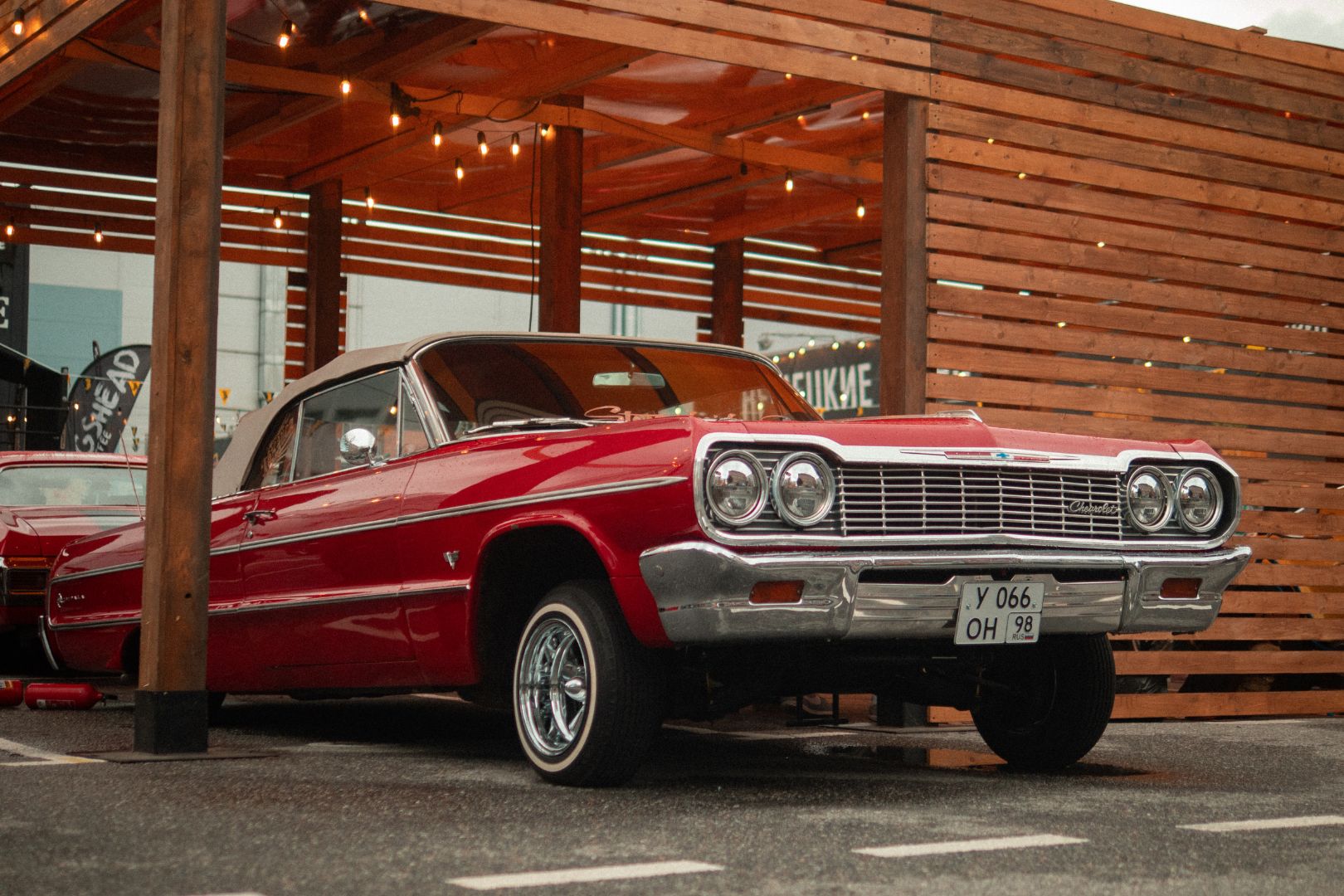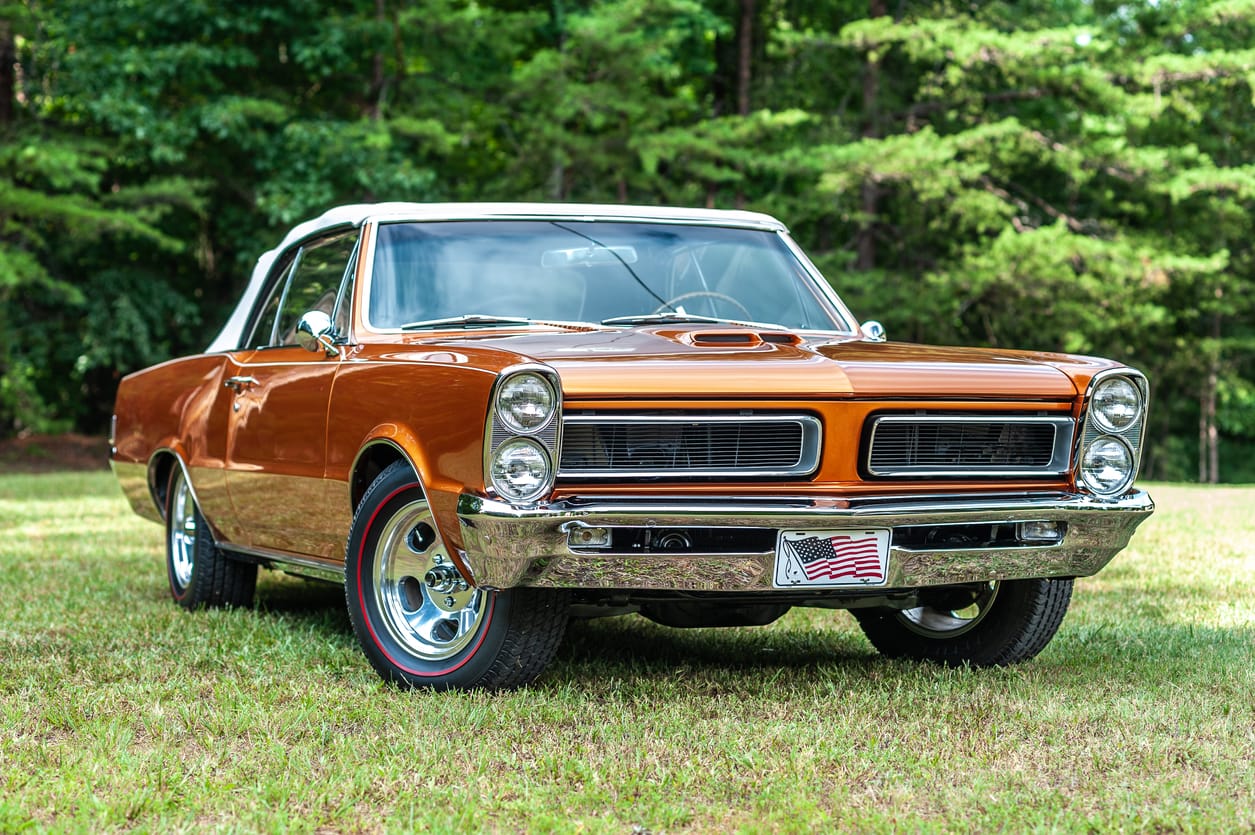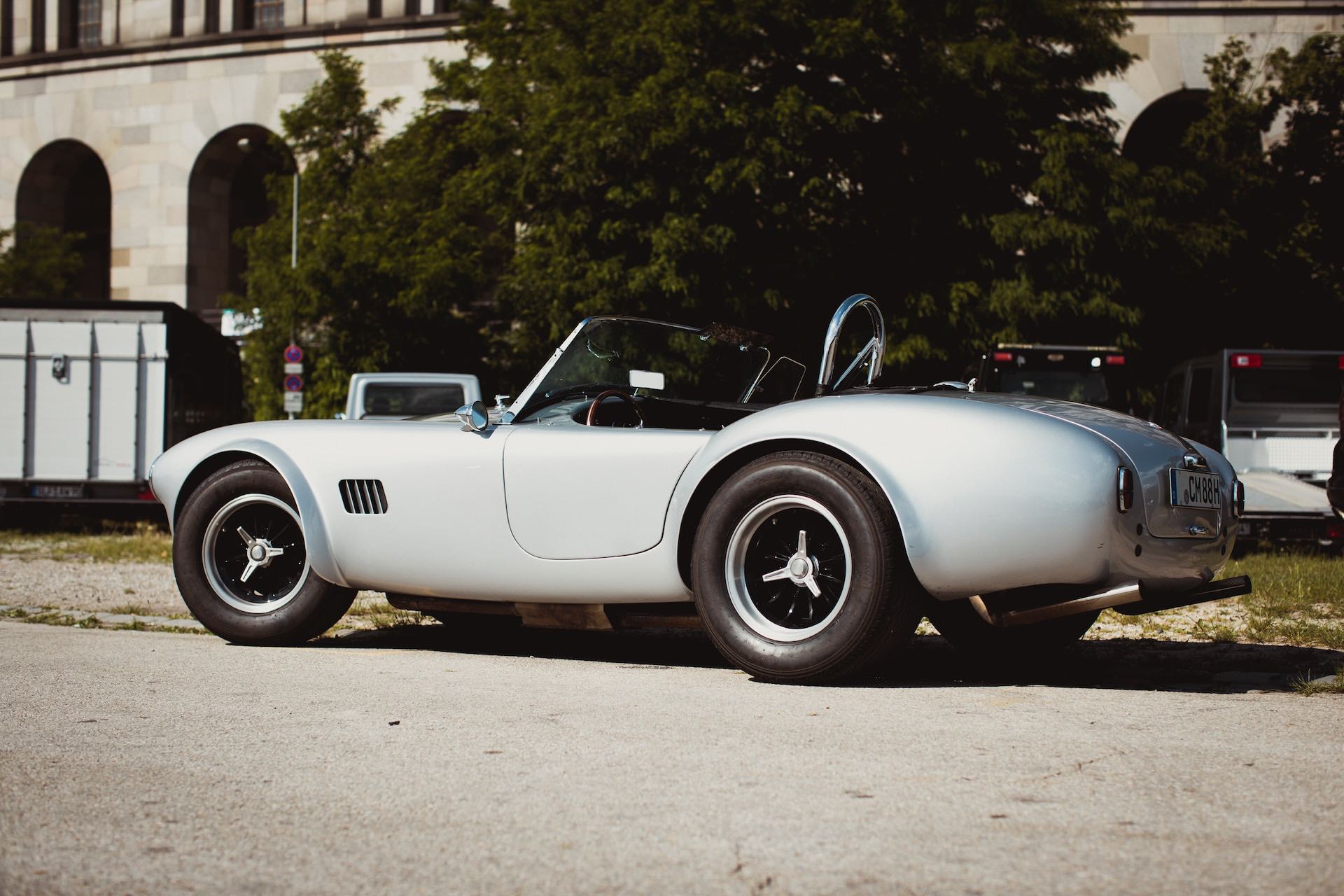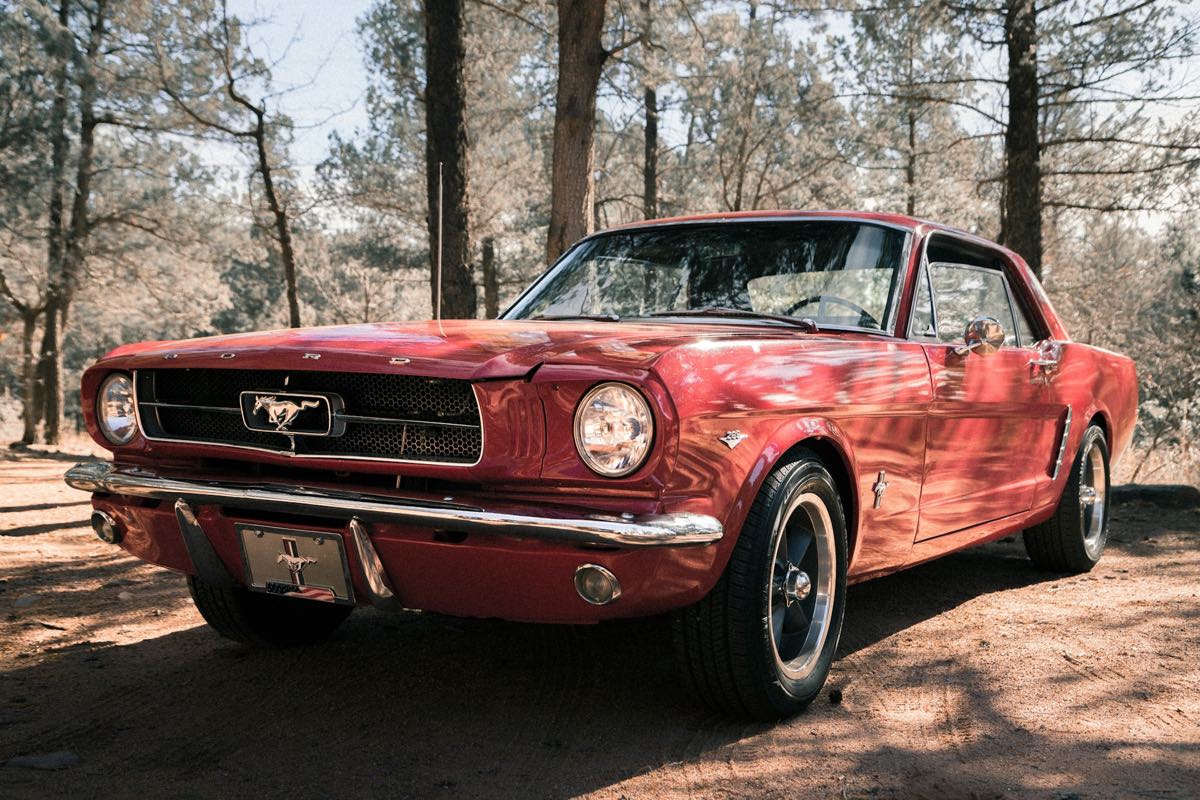Welcome to a captivating journey into the world of classic automobiles. Step into a realm where automotive craftsmanship, timeless design, and nostalgic charm converge. Classic cars have a unique allure that transcends generations, leaving an indelible mark on automotive history.
In this article, we will delve into the distinctions among classic, antique, historic, and vintage cars, unravelling the terminology and shedding light on their significance. Whether you’re an automotive enthusiast, a collector, or simply curious about these magnificent machines, join us as
we explore the fascinating world of classic automobiles.
Get ready to embark on an exhilarating adventure that celebrates the beauty, heritage, and lasting appeal of these remarkable vehicles.
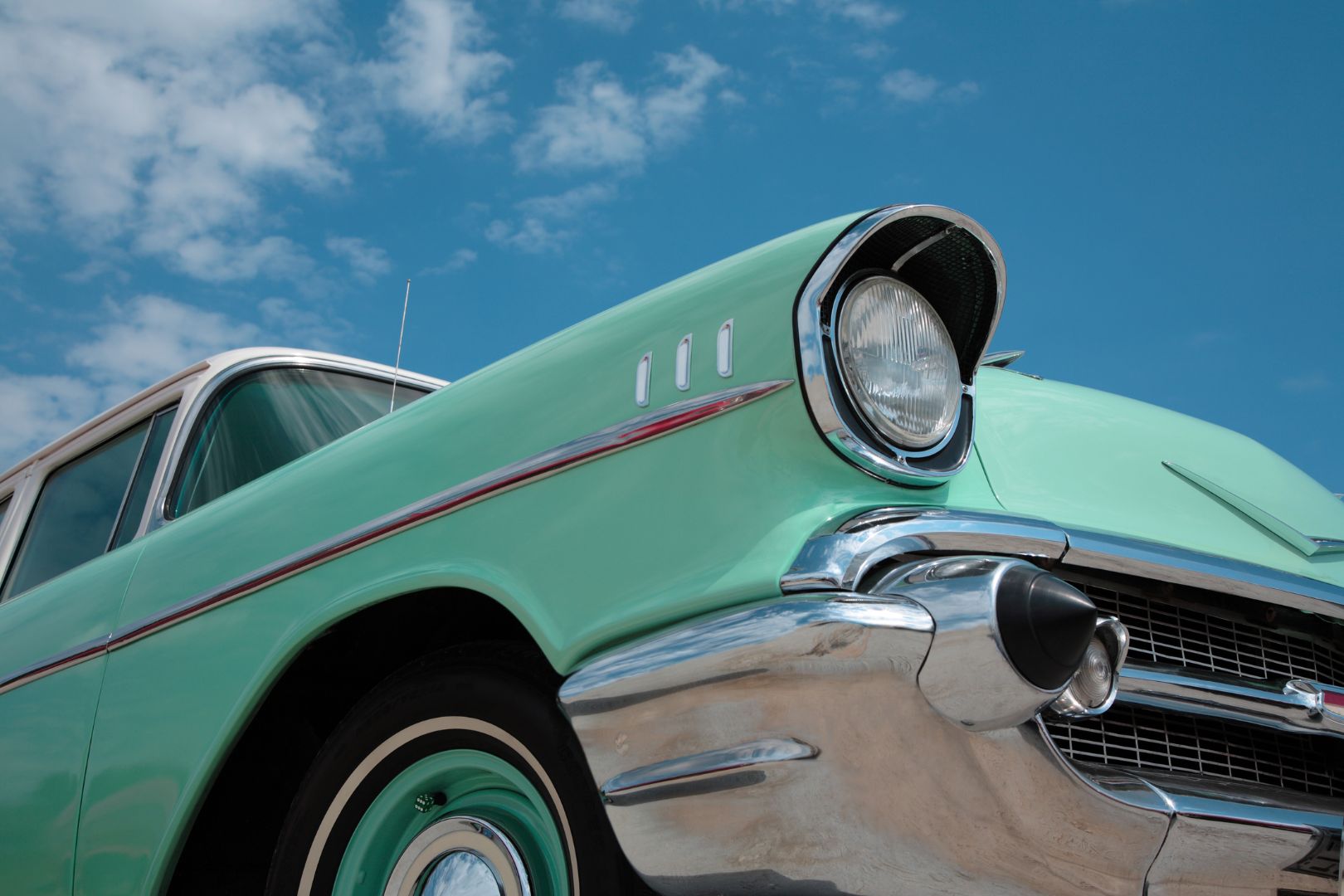
When it comes to classic cars, understanding the various classifications is essential. Classic cars are typically defined as vehicles that possess historical significance, timeless design, and enduring appeal. Here are some key car classifications and their defining characteristics:
Vintage Classics: Vintage classics refer to cars manufactured between the late 1910s and the early 1930s. They exude a distinct charm with their elegant body lines, and ornate details, and often feature luxurious interiors.
Post-War Classics: Post-war classics encompass cars produced from the late 1940s to the early 1960s. These vehicles showcase iconic designs and represent the automotive industry’s post-war renaissance. They often feature sleek lines, chrome accents, and innovative engineering.
Muscle Cars: Muscle cars emerged during the 1960s and 1970s, capturing the spirit of high-performance driving. These powerful machines boast large-displacement engines, aggressive styling, and impressive acceleration. They hold a special place in the hearts of speed enthusiasts and automotive collectors alike.
Luxury Classics: Luxury classics epitomize elegance, refinement, and exclusivity. Produced by prestigious manufacturers, these cars offer exceptional comfort, advanced technologies, and exquisite craftsmanship. They cater to discerning individuals who appreciate the finer aspects of automotive engineering.
To be classified as a classic car, vehicles must meet certain age requirements and production limitations. While specific criteria may vary, here are some general guidelines:
Age Requirements: Classic cars are typically defined as vehicles that are at least 20 to 30 years old. This time frame allows for a sufficient passage of time to establish historical significance and cultural relevance.
Production Limitations: Classic cars are often associated with limited production numbers. Manufacturers may produce a limited run of certain models, resulting in rarity and exclusivity. This factor contributes to the desirability and value of classic cars.
It’s important to note that classifications can vary slightly depending on the source or organization. However, these general guidelines provide a foundation for understanding the characteristics and categorization of classic cars. As we continue our exploration, we will delve deeper into the allure of antique cars and untangle the realm of historic vehicles.
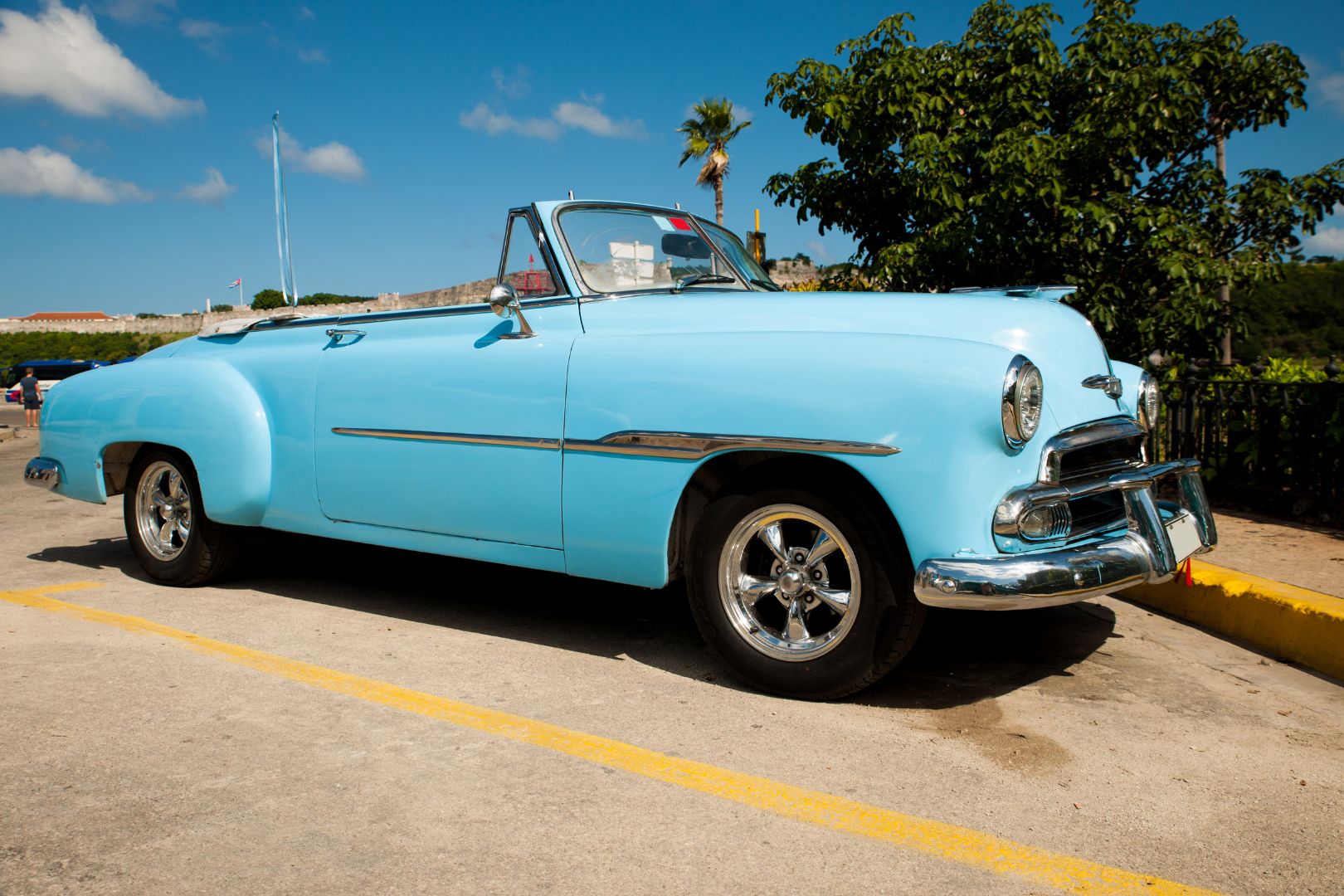
Step into a world where time stands still, and marvel at the enchanting allure of antique cars. Antique cars, also known as vintage automobiles, evoke a sense of nostalgia and transport us to a bygone era. Identifying these treasures requires an appreciation for their unique characteristics and distinguishing features.
Design Elegance: Antique cars often boast exquisite design elements that showcase the craftsmanship of the era they were created in. From sweeping fenders and graceful curves to ornate detailing and artful grillework, these vehicles exude an undeniable charm.
Vintage Materials: Antique cars were built using materials that reflect the technology and craftsmanship of their time. From solid wood dashboards and leather upholstery to polished metal accents and handcrafted finishes, these materials add to their vintage appeal.
Historical Styling Cues: Antique cars carry design cues that reflect the trends and influences prevalent during their production years. Pay attention to distinctive headlamp shapes, radiator grille styles, and body configurations, as they can provide valuable insights into the era from which the vehicle originated.
One of the defining characteristics of antique cars is their rarity. These vehicles, often produced in limited quantities, have stood the test of time and hold immense historical significance. Here’s why antique cars captivate collectors and automotive enthusiasts alike:
Historical Milestones: Antique cars witnessed and participated in significant historical events, representing milestones in automotive history. They are living artefacts that showcase the evolution of automotive technology, design, and cultural impact.
Cultural Icons: Some antique cars have become cultural icons, forever ingrained in our collective memory. Whether it’s the Model T Ford, the elegant Rolls-Royce Silver Ghost, or the iconic Volkswagen Beetle, these vehicles symbolize an era and resonate with people across generations.
Timeless Beauty: Antique cars possess a timeless beauty that transcends the boundaries of fashion and trends. Their graceful lines and elegant proportions evoke a sense of romance, capturing the imagination of those who appreciate automotive artistry.
Owning an antique car means becoming a custodian of history, preserving a piece of automotive heritage for future generations. These extraordinary vehicles, with their rarity, historical significance, and unmatched aesthetic appeal, continue to fascinate enthusiasts, collectors, and all who encounter them. As we move forward, we will unravel the world of historic cars, unearthing their fascinating stories and preservation efforts.
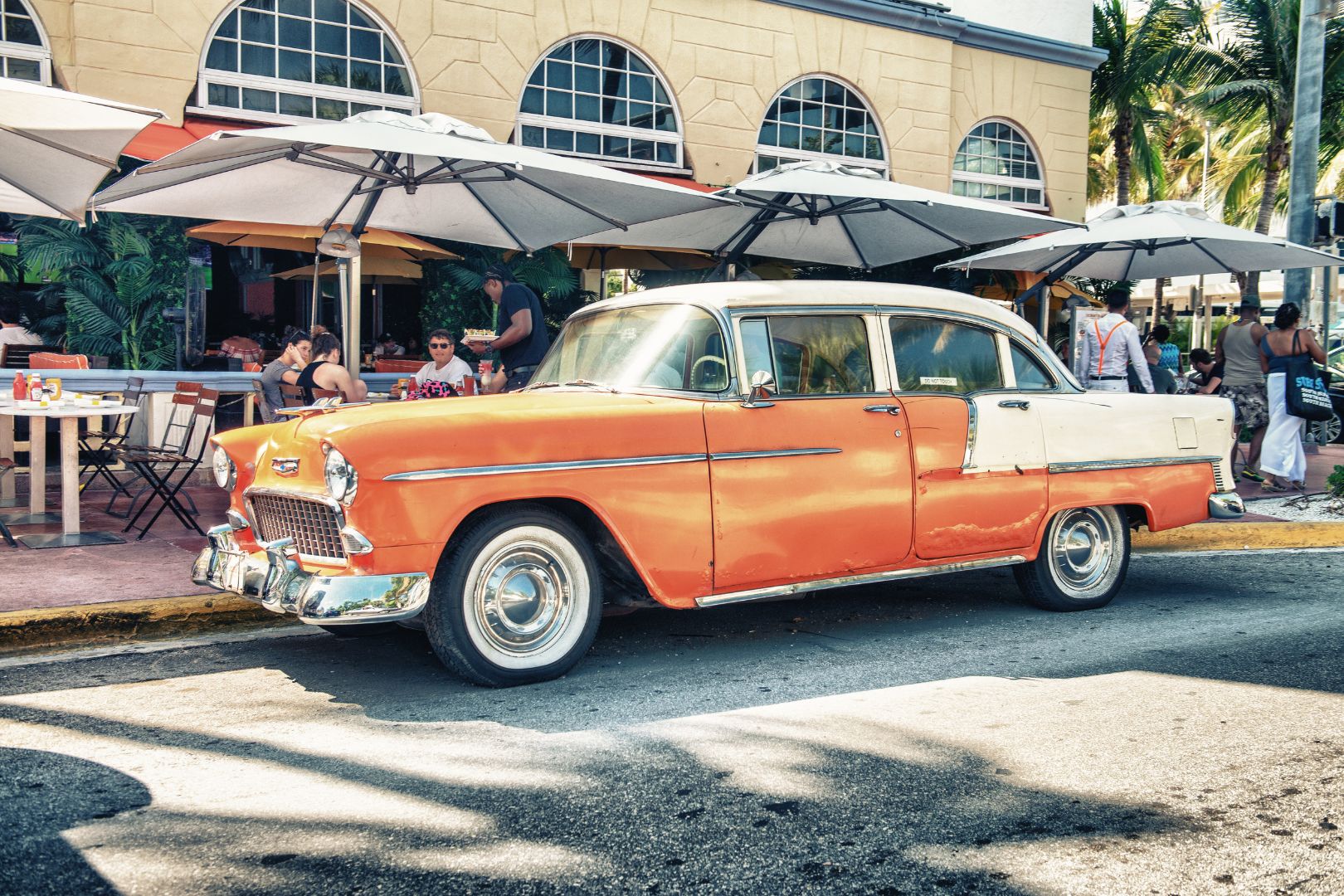
In the vast realm of automotive wonders, historic cars stand as tangible reminders of the past, telling stories that unfold with every curve and contour. But what truly makes a car historic? Let’s uncover the elements that elevate certain vehicles to this prestigious status.
Significance in Automotive History: Historic cars often hold a pivotal role in shaping the automotive industry or representing ground-breaking advancements. Whether they introduced innovative technologies, achieved remarkable feats, or symbolized a transformative era, these vehicles left an indelible mark on the course of automotive history.
Cultural and Social Impact: Some cars transcend their mechanical functions and become cultural icons. They become ingrained in popular culture, representing a particular time, style, or social movement. Think of the Volkswagen Beetle, an emblem of counterculture in the 1960s, or the Ford Mustang, an embodiment of American muscle and freedom.
Limited Production or Special Editions: Historic cars often come from limited production runs or feature special editions that heighten their desirability and exclusivity. The rarity factor, combined with their significant historical or cultural context, adds to their allure and collector’s value.
Preserving and restoring historic cars require a delicate balance between honouring their originality and ensuring their longevity. Here are key considerations for those who undertake the noble task of safeguarding these automotive treasures:
Authenticity: Authenticity plays a crucial role in preserving historic cars. Maintaining original parts, finishes, and design elements is vital to retain the vehicle’s historical accuracy and value. Meticulous research, documentation, and sourcing of genuine components are essential steps in this process.
Historical Accuracy vs. Usability: Restorations must strike a balance between historical accuracy and practicality. While preserving the original appearance is crucial, certain modifications may be necessary for safety, performance, or usability. Experienced restorers navigate this fine line, ensuring the car retains its essence while adapting to modern needs.
Preservation Techniques: Proper preservation techniques involve meticulous cleaning, rust prevention, and storage considerations. Temperature and humidity control, regular inspections, and appropriate cleaning methods help safeguard historic cars from the ravages of time, ensuring they continue to inspire awe for years to come.
Historic cars are not merely metal and rubber; they are rolling works of art, irreplaceable relics that connect us to our past. The recognition of their historical significance and the careful preservation and restoration efforts bestowed upon them ensure their legacy endures.
As we continue our journey, we will unveil the world of vintage cars, uncovering their unique charm and allure.
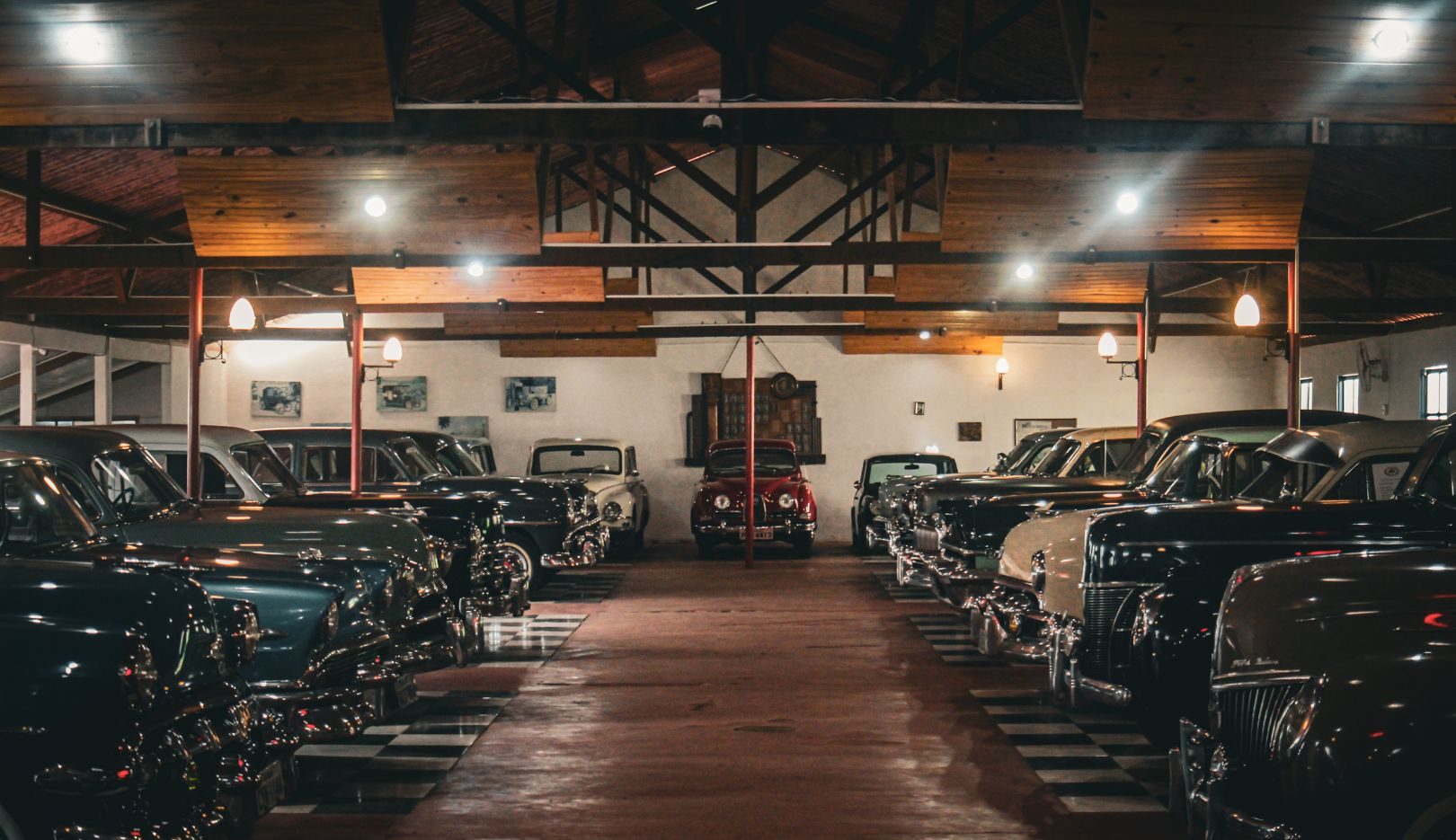
As we continue our exploration into the captivating world of classic automobiles, we now turn our attention to vintage cars, a realm of automotive marvels steeped in nostalgia and timeless allure.
Let us embark on a journey of deciphering these captivating vehicles, unravelling their secrets and discovering what makes them truly special.
Timeless Design: Vintage cars bear witness to an era of automotive design that exudes elegance, sophistication, and grace. From their flowing lines and ornate details to their exquisite craftsmanship, these vehicles encapsulate the spirit of a bygone era, transporting us to a time when automotive artistry reigned supreme.
Classic Styling Cues: Vintage cars carry distinct styling cues that define their era. From the sweeping fenders and voluptuous curves of the 1930s to the bold chrome accents and tail fins of the 1950s, each decade brings its unique aesthetic charm.
Decoding these styling cues allows us to appreciate the craftsmanship and attention to detail that went into creating these automotive masterpieces.
Vintage cars not only capture our hearts with their timeless beauty but also hold a significant place in the realm of collectables. Let’s delve into the aspects that contribute to their collectability and market value:
Rarity: Vintage cars, often produced in limited quantities, become rare gems as the years pass by. Factors such as discontinued models, low production numbers, or specific trims can enhance their rarity, making them highly sought after by collectors.
Historical Significance: Some vintage cars possess historical significance, representing milestones in automotive history or reflecting the spirit of a particular era. Whether it’s a ground-breaking innovation, a race-winning performance, or a symbol of cultural change, these vehicles carry stories that resonate with enthusiasts and historians alike.
Market Demand and Condition: The market demand for vintage cars can greatly influence their value. Popular models from renowned manufacturers or those associated with iconic figures or films often command higher prices. Additionally, the condition of the vehicle, including its authenticity, level of restoration, and overall state, can significantly impact its market value.
Collectors and enthusiasts across the globe cherish vintage cars not only for their beauty but also for the stories they tell and the emotions they evoke. Owning a vintage car is like owning a piece of living history, a tangible connection to a time when the world of automobiles was filled with charm and elegance.
As we progress, we will uncover the key differences between classic, antique, historic, and vintage cars, unravelling the intricacies of each category and deepening our appreciation for these magnificent machines.
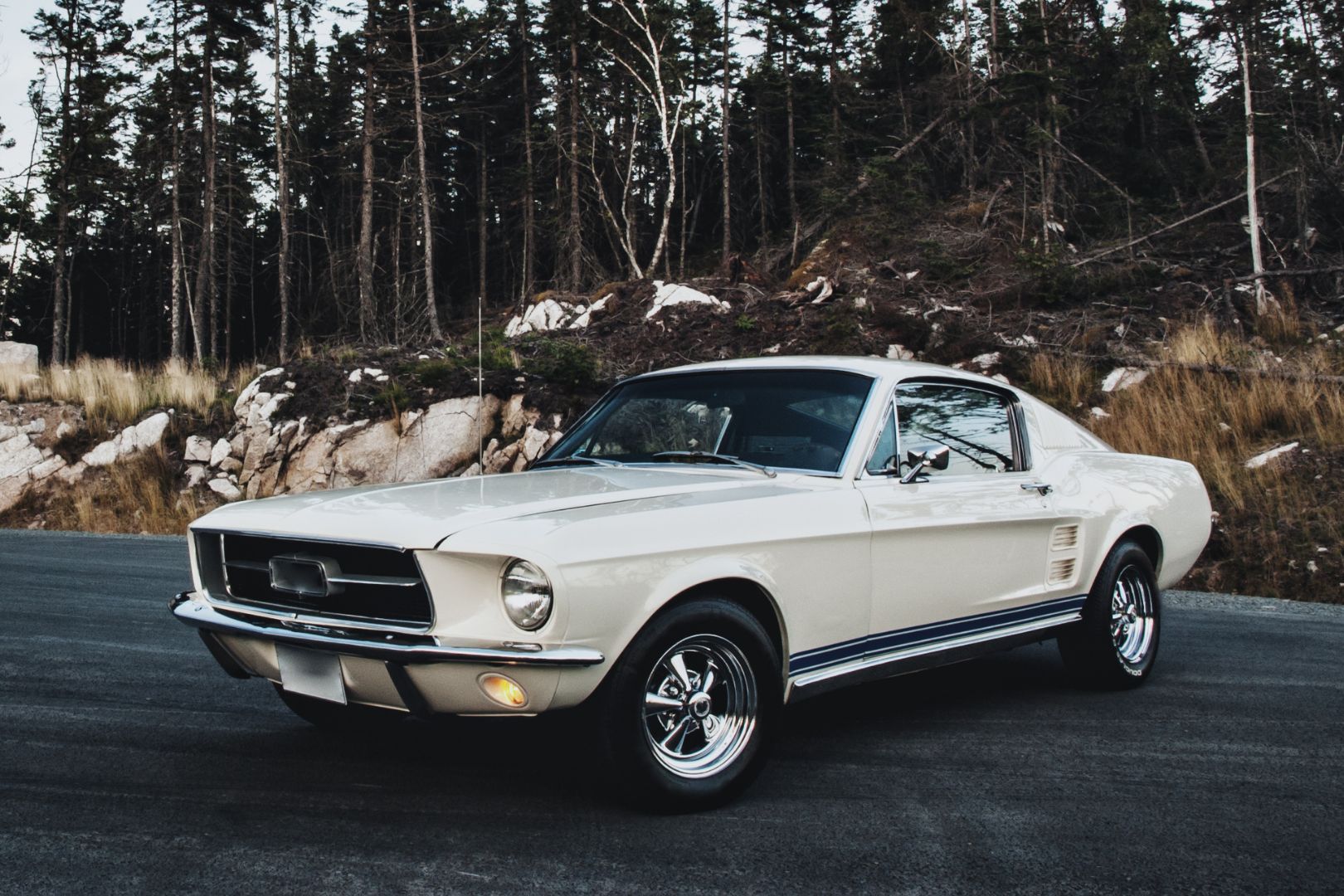
In our quest to unravel the enchanting distinctions among classic, antique, historic, and vintage cars, we delve into a realm where periods, designations, and cultural impact intertwine to shape the essence of each category.
Let us embark on a journey of discovery, exploring the captivating differences that make these automotive treasures truly unique.
Classic Cars: Classic cars typically hail from the golden age of automobiles, spanning roughly from the 1920s to the 1970s. These vehicles showcase timeless design elements and embody the elegance, style, and innovation of their era.
Classic cars often feature iconic models from renowned manufacturers, reflecting the artistry and craftsmanship of automotive design during this influential period.
Antique Cars: Antique cars hold a distinguished place in automotive history, originating from the dawn of the automobile era up until the early 1920s. These early pioneers of the road exhibit characteristics that set them apart, such as brass-era features, wooden frames, and mechanical ingenuity that laid the foundation for the vehicles we know today.
Historic Cars: Historic cars transcend specific periods and focus more on their historical significance and cultural impact. These vehicles can come from various eras, embodying key milestones, technological advancements, or symbolizing significant events in automotive history.
Their designation as historic cars often stems from their profound influence on society and the automotive industry as a whole.
Vintage Cars: Vintage cars, like classic cars, evoke a sense of nostalgia and represent a specific era in automotive history. They generally encompass vehicles produced between the 1910s and the 1960s, bridging the gap between antique and classic cars.
Vintage cars display distinctive styling cues and engineering marvels that capture the spirit of their time, immersing us in the charm and glamour of past decades.
Classic Cars: Classic cars hold a profound significance in the automotive world, serving as symbols of innovation, style, and cultural impact. They represent a time when automobiles became more than mere transportation, embodying the dreams, aspirations, and societal changes of their respective eras.
Classic cars often make appearances in films, literature, and art, solidifying their cultural relevance and leaving an indelible mark on the popular imagination.
Antique Cars: Antique cars hold a unique place in history, representing the pioneering spirit of early automotive enthusiasts. These vehicles offer a glimpse into a time when automobiles were a novelty and driving was an adventure.
Antique cars stand as a testament to human ingenuity, reminding us of the remarkable progress made in the automotive industry and the passion that drove its evolution.
Historic Cars: Historic cars carry immense cultural and historical significance, as they embody pivotal moments and achievements in automotive history. Whether it’s a record-setting race car, an innovative prototype, or a vehicle associated with a significant historical event, these cars serve as tangible links to our collective past.
They are cherished for their ability to transport us back in time, providing a tangible connection to the people and stories that shaped the automotive landscape.
Vintage Cars: Vintage cars evoke a sense of nostalgia and capture the imagination with their distinctive style and character. These vehicles represent a bygone era, where craftsmanship and attention to detail were paramount.
Vintage cars hold cultural value as icons of their time, reflecting the spirit of a particular era and serving as reminders of the fashion, trends, and social dynamics that shaped society.
As we navigate the intricate distinctions among classic, antique, historic, and vintage cars, we uncover a rich tapestry of automotive history, where periods, designations, and cultural impact converge to create a vibrant mosaic of automotive treasures. Join us as we delve deeper
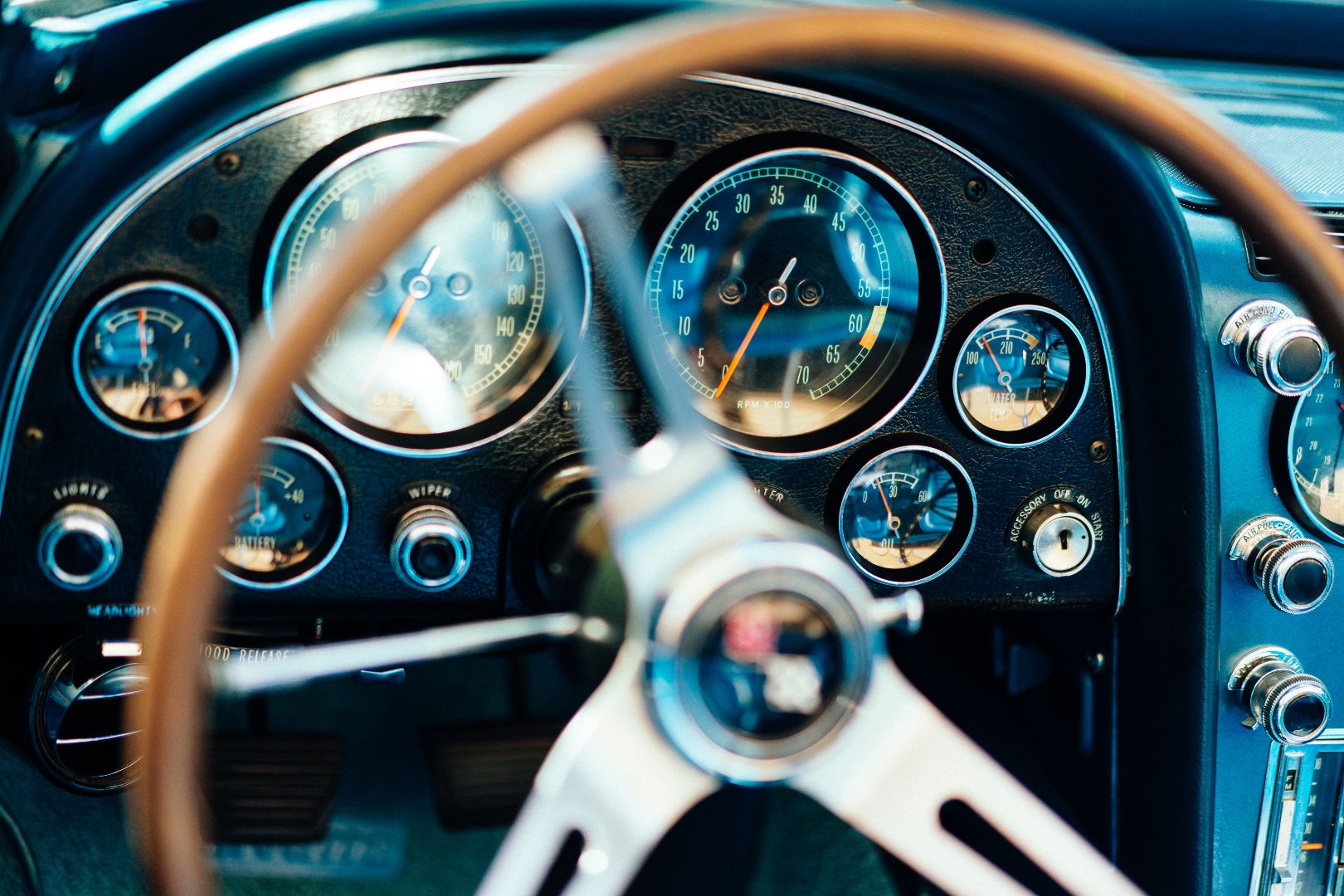
Classic cars hold a timeless allure that captivates enthusiasts and collectors alike. As we delve deeper into the fascinating world of classic automobiles, let us explore the distinctive features that define these magnificent vehicles and discover the joys of collecting and maintaining them.
Timeless Design: Classic cars are renowned for their elegant and iconic design elements. From the graceful curves of a 1957 Chevrolet Bel Air to the sleek lines of a 1961 Jaguar E-Type, these vehicles epitomize automotive artistry.
Classic cars often showcase unique features like prominent grilles, sweeping tail fins, and chrome accents, making them instantly recognizable and eternally stylish.
Engine Power and Performance: Classic cars boast powerful engines that deliver an exhilarating driving experience. From the thunderous roar of a muscle car’s V8 engine to the smooth purr of a luxury coupe, these vehicles were built to provide both style and performance.
Classic cars combine raw power with innovative engineering, offering a nostalgic connection to a time when driving was an immersive and thrilling adventure.
Craftsmanship and Materials: Classic cars embody the meticulous craftsmanship and attention to detail of a bygone era. The interiors often feature sumptuous materials like leather, wood panelling, and intricate upholstery, exuding an air of luxury and refinement.
From hand-polished bodywork to finely crafted dashboard instruments, classic cars showcase the artistry and dedication of skilled artisans.
The Joy of Collecting: Collecting classic cars is a passionate pursuit that allows enthusiasts to own a piece of automotive history. It is an opportunity to preserve and appreciate these remarkable machines, connecting with their heritage and relishing the ownership experience.
As a collector, you become a custodian of automotive art, immersing yourself in a community of like-minded individuals who share your love for classic cars.
Preservation and Restoration: Maintaining a classic car requires careful preservation and, at times, meticulous restoration. Classic car owners take pride in maintaining the authenticity and originality of their vehicles, ensuring that every detail reflects the era in which they were built.
From sourcing rare parts to working with skilled craftsmen, the restoration process is a labour of love that breathes new life into these automotive icons.
Ownership Experience: Owning a classic car is a journey filled with joy, nostalgia, and camaraderie. It provides opportunities to participate in prestigious car shows, connect with fellow enthusiasts, and embark on unforgettable road trips. Classic car ownership offers a unique blend of pride, admiration, and the satisfaction of being part of a rich automotive heritage.
As we immerse ourselves in the world of classic cars, we discover not only the beauty of their design and the thrill of their performance but also the sense of belonging to a passionate community.
Collecting and maintaining these automotive treasures allow us to forge a lasting connection with the past and create memories that will endure for generations to come.
In our exploration of classic cars, we will continue to unveil the wonders of antique, historic, and vintage automobiles, deepening our understanding of their distinctions and celebrating the timeless charm they bring to the world of automotive enthusiasts.
Step into a world where history comes to life and the elegance of a bygone era reigns supreme in the world of antique cars. These remarkable vehicles evoke a sense of nostalgia, showcasing the craftsmanship and innovation of the early days of automobile manufacturing.
Let’s explore some notable antique car models and delve into the captivating world of collecting and restoring these automotive treasures.
Ford Model T: Arguably the most iconic antique car, the Ford Model T revolutionized the automotive industry and paved the way for mass production. Produced from 1908 to 1927, this historic vehicle made automobile ownership accessible to the masses.
Its simple design, durability, and affordability earned it the nickname “Tin Lizzie.” The Ford Model T symbolizes the advent of the automobile age and remains a cherished piece of automotive history.
Rolls-Royce Silver Ghost: Regarded as one of the finest luxury cars of its time, the Rolls-Royce Silver Ghost, produced from 1906 to 1925, epitomizes elegance and sophistication. Renowned for its whisper-quiet engine and exceptional ride quality, this exquisite automobile captured the hearts of discerning individuals seeking the pinnacle of automotive luxury. The Rolls-Royce Silver Ghost continues to command admiration and reverence among collectors worldwide.
Cadillac V-16: Introduced in 1930, the Cadillac V-16 was a masterpiece of engineering and opulence. With its powerful sixteen-cylinder engine and lavish Art Deco-inspired styling, this magnificent car represented the epitome of American luxury during the Great Depression.
The Cadillac V-16 remains an embodiment of automotive grandeur and a testament to Cadillac’s commitment to innovation and craftsmanship.
The Thrill of Collecting: Collecting antique cars is an extraordinary journey into the past. It offers a unique opportunity to own a piece of history and preserve automotive heritage.
Antique car collectors are passionate individuals who value the stories, craftsmanship, and cultural significance of these vintage automobiles. The pursuit of rare models and the satisfaction of building a remarkable collection add to the allure of antique car collecting.
Restoring Automotive Art: Restoring antique cars is a labour of love that requires dedication, expertise, and meticulous attention to detail. The restoration process involves sourcing authentic parts, researching historical accuracy, and ensuring that every element is brought back to its original glory.
Restorers aim to revive the car’s original beauty and charm, allowing future generations to appreciate the craftsmanship and design of these automotive marvels.
Preserving Automotive History: By collecting and restoring antique cars, enthusiasts play a vital role in preserving automotive history. These dedicated individuals ensure that these timeless machines are not forgotten but cherished and enjoyed for years to come. Through meticulous preservation and responsible ownership, antique car collectors contribute to the cultural fabric and heritage of the automotive world.
As we explore the world of antique cars, we are transported to a time of elegance, craftsmanship, and pioneering innovation. The notable models mentioned above are just a glimpse into the vast array of antique cars that have shaped the automotive landscape. Collecting and restoring these magnificent vehicles allow us to relish the beauty of the past and appreciate the remarkable achievements of early automotive pioneers.
In our journey through classic, antique, historic, and vintage cars, we continue to unravel the stories and significance behind these automotive icons. Stay tuned as we embark on the exploration of historic cars and the captivating realm of preserving and displaying these cherished relics of the past.
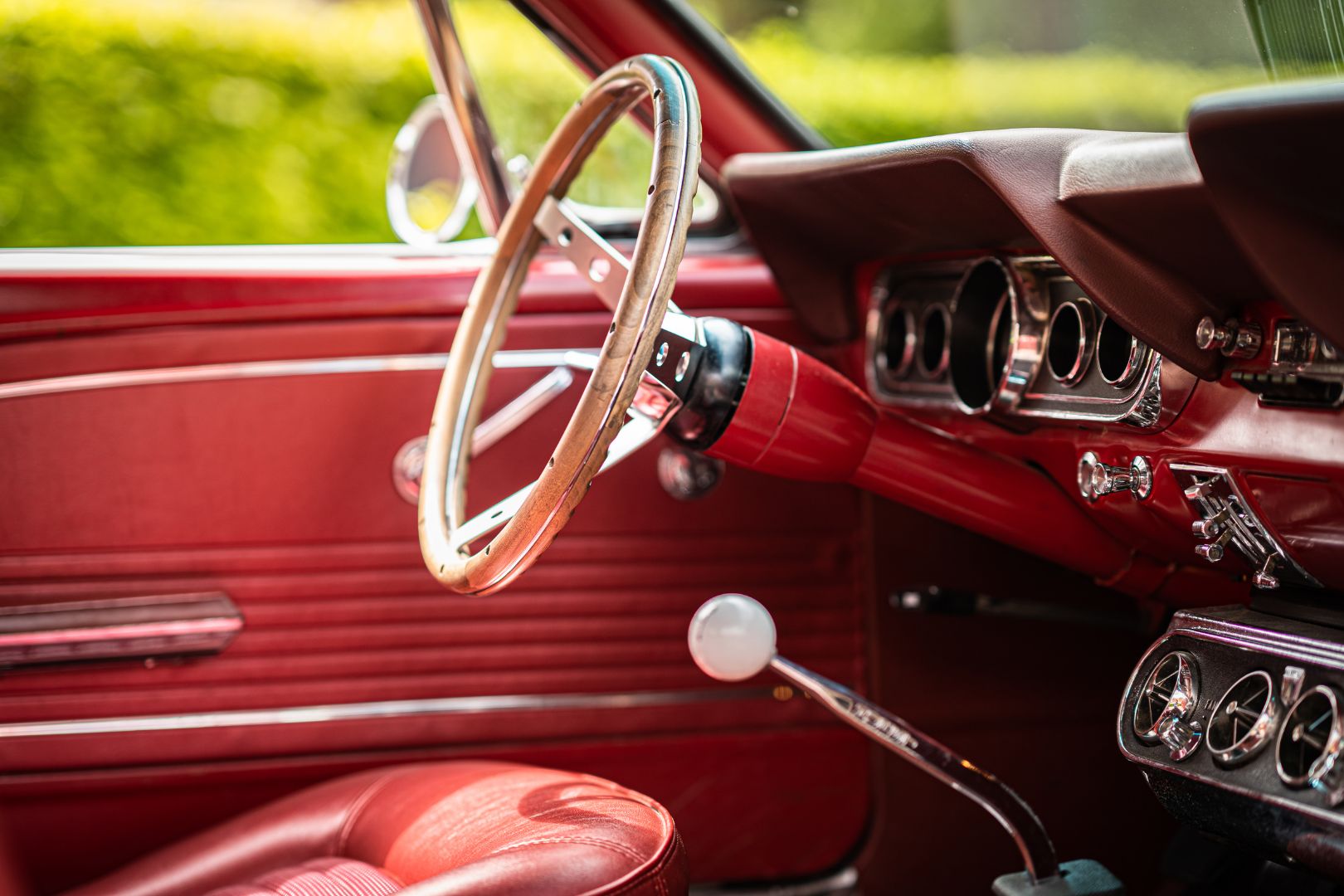
Step into the realm of historic cars, where time-honoured events and the preservation of automotive heritage converge. These remarkable vehicles bear witness to significant moments in history and continue to captivate enthusiasts and history buffs alike. Let’s delve into some famous historic car events and explore the art of preserving and displaying these automotive treasures.
Pebble Beach Concours d’Elegance: Held annually on the picturesque Pebble Beach Golf Links in California, the Pebble Beach Concours d’Elegance is a world-renowned event that showcases the most exquisite and rare vintage cars.
Automobile enthusiasts from around the globe gather to witness the beauty and elegance of these meticulously restored automobiles. The event also features various rare car auctions, providing an opportunity for collectors to acquire coveted automotive gems.
Goodwood Festival of Speed: The Goodwood Festival of Speed, hosted at the Goodwood Estate in West Sussex, England, is an unparalleled celebration of automotive history and performance. This iconic event brings together historic cars, supercars, and motorsport legends for an exhilarating showcase of speed, skill, and engineering prowess.
Spectators are treated to thrilling hill climb races, vintage car displays, and the chance to witness iconic vehicles in action.
Museums and Exhibitions: Museums play a crucial role in preserving and displaying historic cars, offering visitors a chance to witness automotive history up close. These institutions meticulously curate collections that span different eras and showcase the evolution of automotive design and technology.
From the Henry Ford Museum in Michigan to the Mercedes-Benz Museum in Germany, these establishments provide a glimpse into the past and educate future generations about the rich heritage of automobiles.
Private Collections: Many passionate collectors dedicate their resources and expertise to amassing private collections of historic cars. These collectors take pride in acquiring and preserving rare and significant vehicles, ensuring that they remain in pristine condition for years to come. Some collectors open their doors to the public, allowing enthusiasts to appreciate these automotive treasures firsthand and fostering a deeper appreciation for automotive history.
Historic Car Rallies: Historic car rallies offer a unique opportunity to experience these vintage automobiles in action. These events bring together owners of historic cars for multi-day drives along scenic routes, allowing participants to showcase their vehicles while enjoying the camaraderie of fellow enthusiasts.
The rallies often attract a wide range of historic cars, from elegant classics to rugged vintage off-roaders, providing a captivating spectacle for both participants and onlookers.
Preserving and displaying historic cars not only ensures their physical integrity but also safeguards their historical significance for future generations. These events and efforts celebrate the achievements of automotive pioneers, allowing us to appreciate the craftsmanship, design, and cultural impact of these timeless vehicles.
As our journey through classic, antique, historic, and vintage cars continues, we uncover the stories behind these automotive treasures and explore their lasting influence on popular culture. Join us as we delve into the enchanting world of vintage cars and discover the joys of owning and enjoying these cherished relics of the past.
Indulge in the allure of vintage cars and step into a bygone era where elegance, charm, and timeless design reign supreme. These iconic automotive marvels hold a special place in the hearts of collectors and enthusiasts who appreciate the craftsmanship and nostalgia they evoke. Let’s explore some of the most iconic vintage car models and discover the joys of owning and enjoying these remarkable vehicles.
Ford Mustang (1964-1973): The Ford Mustang is a symbol of American automotive culture and an epitome of the classic muscle car. Its sleek design, powerful engines, and exhilarating performance have made it an enduring icon. From the early ’60s models with their distinctive pony emblem to the aggressive muscle of the Boss 302 and Mach 1 variants, the Mustang embodies the spirit of freedom and adventure on the open road.
Volkswagen Beetle (1938-2003): The Volkswagen Beetle, affectionately known as the “Bug,” captured the hearts of millions with its charming, rounded silhouette and quirky personality. Originally designed in the 1930s, the Beetle became an emblem of the counterculture movement in the 1960s, symbolizing individuality and a carefree spirit. Its simplicity, reliability, and iconic design continue to make it a beloved choice for vintage car enthusiasts worldwide.
The Joy of Restoration: Restoring a vintage car can be a rewarding journey, allowing you to breathe new life into a piece of automotive history. From sourcing original parts to meticulously bringing the car back to its former glory, the restoration process becomes a labour of love. It offers a unique opportunity to connect with the craftsmanship of the past and to relish the satisfaction of reviving a classic vehicle.
Cruising in Style: Owning a vintage car provides a unique driving experience that transports you to a different era. The tactile steering, the purr of the engine, and the manual gear shifts create a connection between the driver, the machine, and the road. Whether it’s a leisurely drive on a scenic route or participating in vintage car rallies, the thrill and sense of nostalgia are unmatched, making every journey a memorable one.
Connecting with a Community: Embracing vintage car ownership opens the doors to a vibrant community of fellow enthusiasts. Car shows, meetups, and club events bring together like-minded individuals who share a passion for these classic automobiles. The camaraderie shared knowledge, and the opportunity to learn from experienced collectors make for an enriching experience within this tight-knit community.
As we delve into the world of vintage cars, we rediscover the charm and elegance that defined an era of automotive excellence. These iconic models and the pleasures of owning and enjoying vintage cars offer an escape from the ordinary and a chance to appreciate the craftsmanship, design, and spirit of a bygone era. Let the allure of vintage cars ignite your passion and take you on a journey through time.
Classic, antique, historic, and vintage cars have left an indelible mark on popular culture, shaping our perceptions of style, luxury, and automotive excellence. Their influence extends beyond the realm of transportation, permeating various aspects of our society. Let’s explore the impact of these remarkable vehicles on popular culture and the thriving communities of car shows and enthusiasts.
Film and Television: Classic, antique, historic, and vintage cars have played starring roles in countless films and television shows, becoming iconic symbols of elegance, adventure, and sophistication. From the sleek Aston Martin DB5 in James Bond movies to the unforgettable DeLorean DMC-12 in “Back to the Future,” these cars have become cultural touchstones, leaving an everlasting imprint on the cinematic landscape.
Music and Art: The allure of classic cars has inspired artists and musicians throughout history. From rock ‘n’ roll anthems celebrating the freedom of the open road to visual artists capturing the beauty of these vehicles on canvas, their timeless appeal has served as a muse for creative expression.
The sleek lines, gleaming chrome, and evocative designs have become subjects of fascination, immortalized in artistic masterpieces.
Celebrating Automotive Heritage: Car shows dedicated to classic, antique, historic, and vintage cars bring together enthusiasts from all walks of life to celebrate the rich heritage of these remarkable vehicles.
These events provide a platform for owners to showcase their meticulously restored gems, fostering a sense of pride and camaraderie within the community. Visitors have the opportunity to admire rare models, exchange knowledge, and forge lasting connections with fellow enthusiasts.
Preserving Automotive History: Enthusiasts’ communities play a vital role in preserving and safeguarding automotive history. Through their passion for restoration, maintenance, and documentation, they ensure that these treasured vehicles continue to exist for future generations to appreciate.
The dedication and expertise of these individuals contribute to the ongoing preservation of classic, antique, historic, and vintage cars as valuable pieces of our collective heritage.
By influencing popular culture and nurturing passionate communities, classic, antique, historic, and vintage cars have become more than mere vehicles. They embody a tangible link to our past, evoking a sense of nostalgia and serving as reminders of the ingenuity, craftsmanship, and design excellence of bygone eras.
The impact of these extraordinary cars resonates far beyond the automotive realm, inspiring creativity, fostering connections, and leaving an enduring legacy for generations to come.
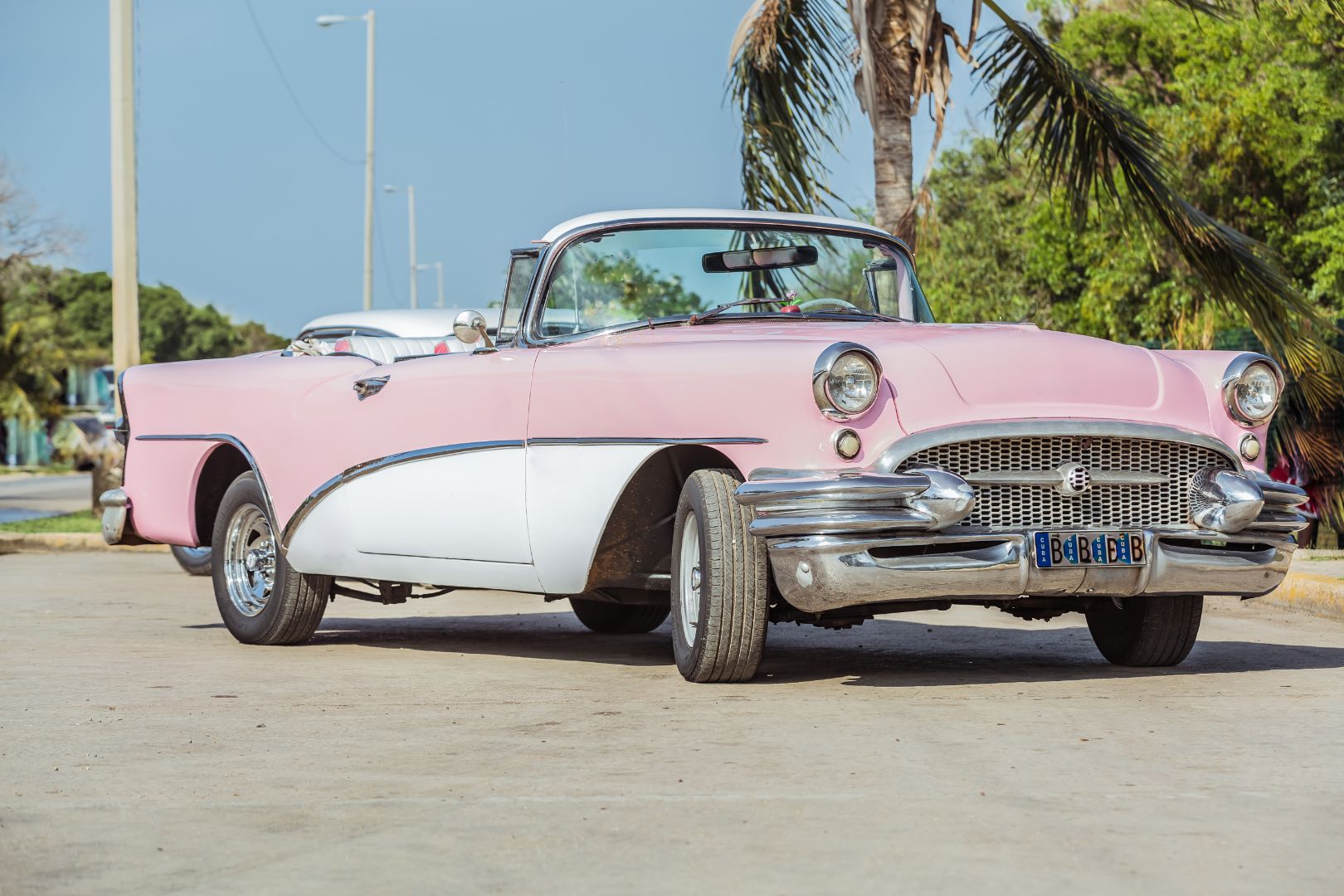
Determining the value of classic, antique, historic, and vintage cars requires careful consideration of various factors. These remarkable vehicles hold both sentimental and financial worth, and understanding the elements that influence their value is essential for collectors, enthusiasts, and potential buyers.
Let’s explore the key factors that affect the value of these automotive treasures and delve into the world of market trends and appraisal techniques.
Rarity: The scarcity of a particular make, model, or edition significantly impacts its value. Cars produced in limited numbers or with unique features that differentiate them from others of their era tend to command higher prices. Rarity adds an element of exclusivity, making these vehicles highly sought after by collectors and enthusiasts.
Condition: The condition of a classic, antique, historic, or vintage car plays a crucial role in determining its value. Well-preserved vehicles, meticulously maintained, or restored to their original glory generally command higher prices.
Factors such as mileage, originality of parts, and overall cosmetic and mechanical condition contribute to the assessment of value.
Historical Significance: Cars associated with significant historical events, renowned figures, or important milestones in automotive history tend to have a higher value. The historical context and provenance of a vehicle can elevate its desirability and increase its market worth.
Vehicles with documented histories and compelling narratives often attract collectors willing to pay a premium for the connection to the past.
Authenticity: The authenticity of a classic, antique, historic, or vintage car is vital in determining its value. Originality, including matching numbers, correct specifications, and factory options, adds authenticity and enhances the car’s worth. Vehicles with well-documented histories and verified provenance are more likely to maintain and increase their value over time.
Market Trends: Like any other commodity, the value of classic, antique, historic, and vintage cars can fluctuate based on market trends. Factors such as supply and demand, economic conditions, and cultural shifts influence the perceived value of these vehicles.
Staying informed about current market trends, attending auctions, and monitoring sales data can provide valuable insights into the value of specific cars.
Appraisal Techniques: Appraisal is a critical step in evaluating the value of classic, antique, historic, and vintage cars. Professional appraisers utilize various techniques to assess a vehicle’s worth, including examination of its condition, documentation review, comparison with similar vehicles in the market, and consideration of historical significance.
These experts provide comprehensive and unbiased evaluations that help both buyers and sellers make informed decisions.
When evaluating the value of classic, antique, historic, and vintage cars, it is essential to consider the interplay of factors such as rarity, condition, historical significance, and authenticity.
Understanding current market trends and engaging the expertise of professional appraisers can further refine the assessment. By delving into these considerations, collectors and enthusiasts can navigate the dynamic world of automotive valuation and make informed decisions about their prized possessions.
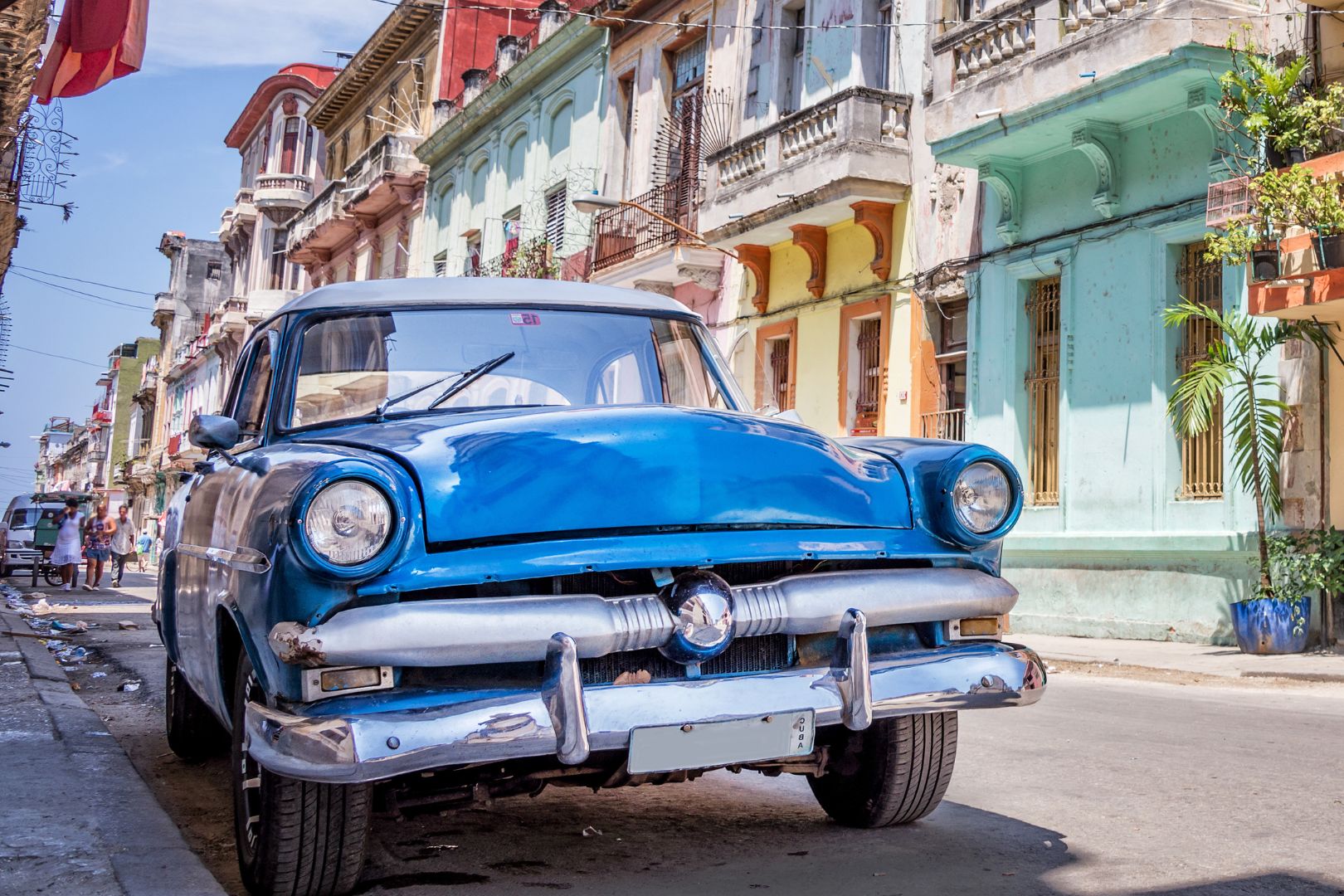
When it comes to owning and enjoying classic, antique, historic, and vintage cars, it is important to be aware of the legal considerations that come along with these timeless vehicles.
From registration and licensing requirements to insurance and maintenance regulations, understanding the legal obligations can help ensure a smooth and compliant ownership experience. Let’s delve into the key legal considerations associated with these cherished automobiles.
Vehicle Registration: Classic, antique, historic, and vintage cars typically require registration with the appropriate governmental agency. The specific requirements may vary depending on the jurisdiction, but generally, owners will need to provide documentation such as proof of ownership, vehicle identification number (VIN), and applicable fees.
Some regions may have special registration designations for these types of vehicles, which often come with specific benefits or restrictions.
Historic or Vintage Plates: In certain jurisdictions, owners have the option to obtain historic or vintage license plates for their eligible vehicles. These plates typically have unique designs and may come with certain privileges, such as exemption from periodic inspections or access to designated lanes during events.
It is important to check local regulations to determine eligibility and any specific requirements for obtaining and displaying these plates.
Driver’s License: To legally operate a classic, antique, historic, or vintage car on public roads, owners must hold a valid driver’s license appropriate for the vehicle’s classification. Some jurisdictions may have additional licensing requirements for specific types of vehicles, such as commercial driver’s licenses for certain vintage trucks or buses.
Insurance Coverage: Adequate insurance coverage is crucial to protect classic, antique, historic, and vintage cars from potential risks. While insurance requirements may vary depending on the jurisdiction, owners should consider specialized insurance policies tailored to the unique needs of these vehicles.
These policies may offer features such as agreed value coverage, which ensures that the car’s appraised value is fully covered in the event of a loss.
Safety and Maintenance: Maintaining classic, antique, historic, and vintage cars in safe and roadworthy conditions is essential. Owners should familiarize themselves with local regulations regarding vehicle safety inspections, emissions testing, and maintenance requirements.
Regular maintenance and servicing by qualified professionals not only ensure compliance with regulations but also contribute to the longevity and performance of these treasured automobiles.
Import and Export Regulations: If you plan to import or export a classic, antique, historic, or vintage car across international borders, it is important to understand the specific regulations governing such transactions.
Each country may have its own customs requirements, documentation procedures, and restrictions on certain vehicle types. Working with experienced agents or customs brokers can help navigate the complexities of international car transportation.
By familiarizing yourself with the registration and licensing requirements, insurance considerations, and maintenance regulations associated with classic, antique, historic, and vintage cars, you can ensure a lawful and enjoyable ownership experience.
Staying up to date with the local laws and seeking professional advice when needed will help you navigate the legal landscape and fully embrace the pleasure of owning these remarkable vehicles.
When venturing into the market for classic, antique, historic, and vintage cars, it is essential to find reputable sellers and auctions to ensure a smooth and trustworthy transaction.
Here are some tips to guide you in your search:
Research and Gather Information: Start by conducting thorough research on reputable sellers and auction houses that specialize in these types of vehicles. Look for established dealers or auction companies with a strong track record and positive reviews from past customers. Online platforms, enthusiast forums, and collector communities can be valuable sources of information and recommendations.
Attend Classic Car Shows and Events: Classic car shows and events provide excellent opportunities to meet sellers, interact with enthusiasts, and explore a wide range of vehicles in person. These events often attract reputable sellers and auction houses who showcase their inventory and provide insights into the market. Attendees can network with industry professionals and fellow enthusiasts, gaining valuable knowledge and contacts.
Engage with Collector Communities: Joining collector communities and forums dedicated to classic, antique, historic, and vintage cars can provide valuable insights and connections. Engage in discussions, seek advice from experienced collectors, and inquire about recommended sellers or auctions.
These communities often have members who are passionate about preserving the integrity of the market and can offer guidance based on their own experiences.
One of the crucial aspects of purchasing a classic, antique, historic, or vintage car is ensuring its authenticity and verifying its vehicle history. Here’s how you can navigate this process effectively:
Obtain Documentation: Request comprehensive documentation for the vehicle, including the title, registration records, maintenance history, and any available service or restoration receipts. Authentic vehicles should come with the proper paperwork that supports their provenance and verifies their history.
Conduct Vehicle Inspections: Hire a qualified inspector or enlist the services of a reputable appraiser to thoroughly inspect the car. They will assess the vehicle’s condition, originality, and matching numbers, checking for any signs of restoration or modification. This step is vital to ensure that the car aligns with its claimed heritage.
Research Vehicle History: Conduct meticulous research into the vehicle’s history using available resources. Look for records, photographs, and documentation that trace the car’s lineage and any notable events it may have been a part of. Online databases, classic car registries, and historical archives can provide valuable information.
Seek Expert Opinion: If necessary, consult experts or specialists who are knowledgeable about specific makes and models. They can provide insights into the vehicle’s authenticity, production details, and any unique features to look out for. Their expertise can be invaluable in determining the accuracy of the vehicle’s claims.
Navigating the market for classic, antique, historic, and vintage cars requires diligence, research, and attention to detail. By finding reputable sellers and auctions and verifying the vehicle’s authenticity and history, you can make informed decisions and confidently acquire a cherished automobile that aligns with your desires and expectations.

As we look toward the future, classic, antique, historic, and vintage cars continue to captivate enthusiasts and collectors around the world. However, the perspectives and trends surrounding these timeless automobiles are evolving. Here’s a glimpse into what the future holds:
Growing Appreciation: The appreciation for classic, antique, historic, and vintage cars is expected to continue expanding. As younger generations develop an interest in automotive history and design, the demand for these unique vehicles is likely to increase.
Their timeless charm, craftsmanship, and connection to the past resonate with individuals seeking authenticity and a departure from mass-produced modern cars.
Modernization and Customization: With advancements in technology, we can expect to see modernization and customization trends in classic, antique, historic, and vintage cars. Restomods, which combine vintage aesthetics with modern performance and technology, are gaining popularity.
These innovative creations offer the best of both worlds, allowing enthusiasts to enjoy classic styling while benefiting from improved reliability, safety features, and enhanced performance.
Electric Conversions: As the world embraces sustainable solutions, the conversion of classic, antique, historic, and vintage cars to electric power is gaining traction. Electric conversions enable owners to preserve the iconic design and character of their beloved vehicles while reducing their environmental impact. This trend aligns with the shift towards greener transportation and reflects a commitment to sustainably preserving automotive heritage.
Preserving classic, antique, historic, and vintage cars is not only about maintaining their beauty and heritage but also about embracing sustainability. Here are some notable preservation efforts and sustainable practices shaping the future:
Historical Significance: Institutions, museums, and organizations dedicated to preserving automotive history play a crucial role in safeguarding the legacy of these vehicles. Through comprehensive restoration, documentation, and public display, they ensure that future generations can appreciate and learn from these automotive treasures.
Education and Awareness: Promoting education and awareness about the importance of preserving classic, antique, historic, and vintage cars is key to their sustainability. By emphasizing the cultural and historical significance of these vehicles, enthusiasts and collectors can encourage responsible ownership, maintenance, and restoration practices.
Sustainable Restoration: Embracing sustainable restoration practices helps reduce the environmental impact associated with classic car ownership. Using eco-friendly materials, implementing energy-efficient processes, and adopting responsible waste management techniques can minimize the carbon footprint of restoration projects.
Ethical Sourcing: The future of classic car restoration and preservation also involves the ethical sourcing of parts and materials. Enthusiasts are increasingly mindful of using reclaimed or recycled components, supporting eco-friendly suppliers, and prioritizing sustainability throughout the supply chain.
The future of classic, antique, historic, and vintage cars holds a delicate balance between preserving automotive heritage and embracing sustainability. As perspectives and trends evolve, it is essential to find innovative ways to celebrate these cherished automobiles while minimizing their environmental impact.
By doing so, we can ensure that future generations will continue to appreciate and enjoy the beauty, craftsmanship, and cultural significance of these automotive treasures.

When it comes to shipping your classic, antique, historic, or vintage car, we understand the unique requirements and value of these cherished vehicles. At Ship A Car, we are dedicated to providing you with a seamless and reliable shipping experience for your precious automobile.
✨ Expertise in Classic Car Transportation: Our team specializes in handling classic cars, antique vehicles, historic automobiles, and vintage rides. With our extensive experience, we ensure that your valuable treasures receive the utmost care and attention during transit.
✨ Customized Solutions: We recognize that every classic car is unique. That’s why we offer customized shipping solutions tailored to meet your specific needs. Whether you own a rare vintage vehicle or a historic gem, we have the expertise to provide the right transportation options for safe and secure delivery.
✨ Professional Handling and Protection: Rest assured that your classic car will be handled by our trained professionals who understand the importance of proper care and protection. We utilize specialized equipment and secure loading techniques to minimize the risk of damage during transportation.
✨ Door-to-Door Service: Enjoy the convenience of our door-to-door service. We will pick up your classic car from its current location and deliver it directly to your desired destination. Say goodbye to arranging additional transportation or worrying about logistics.
✨ Timely and Transparent Communication: We understand the importance of keeping you informed. Throughout the shipping process, we provide timely updates on the progress of your vehicle’s transportation. Our aim is to ensure transparency and maintain clear communication every step of the way.
✨ Compliance with Regulations: Navigating the legal requirements involved in shipping classic, antique, historic, and vintage cars can be complex. Our knowledgeable team has the expertise to ensure compliance with all necessary regulations, both domestically and internationally, making the shipping process hassle-free for you.
When it comes to shipping your classic, antique, historic, or vintage car, Ship A Car, Inc. is your trusted partner. Our expertise, customized solutions, professional handling, comprehensive insurance coverage, and excellent customer service make us the go-to choice for transporting your precious automotive treasures. Trust SAC for a safe and secure journey for your beloved classic car. Contact us today to experience our top-notch shipping services.

Beyond their aesthetic allure, these types of cars foster a sense of community among enthusiasts and fuel a vibrant collector’s market. They create connections and conversations, bridging generational gaps and inspiring lifelong passions. The appreciation and celebration of classic, antique, historic, and vintage cars contribute to the preservation of our automotive heritage.
Looking ahead, it is important to recognize the evolving perspectives, preserve these vehicles, and adopt sustainable practices. By educating enthusiasts, promoting responsible ownership, and embracing sustainable technologies, we can ensure the longevity and legacy of these automotive treasures for future generations.
To conclude, classic, antique, historic, and vintage cars offer a captivating glimpse into the past, representing different eras and embodying the artistry, innovation, and cultural impact of the automotive industry.
They serve as tangible reminders of our automotive history, evoking emotions, admiration, and fascination among enthusiasts worldwide. By celebrating and preserving these extraordinary machines, we honour their enduring significance and contribute to the rich tapestry of automotive heritage.
Q: What is the difference between a classic car and an antique car?
A: The main difference between a classic car and an antique car lies in their age and historical significance. Classic cars are typically considered to be vehicles that are at least 20 to 30 years old and represent a specific era of automotive design. Antique cars, on the other hand, are generally regarded as vehicles manufactured before the 1940s, showcasing early automotive technology and craftsmanship.
Q: What qualifies a car as a historic vehicle?
A: A car is designated as a historic vehicle based on its association with significant events, achievements, or notable figures in automotive history. These vehicles have played a crucial role in shaping the automotive industry and have cultural and historical significance. Historic cars often have documentation or provenance that verifies their historical importance.
Q: How is a vintage car different from a classic car?
A: While the terms “vintage” and “classic” are sometimes used interchangeably, there is a subtle distinction between the two. Vintage cars typically refer to vehicles from a particular time, typically between the 1910s and 1970s, reflecting the styles and trends of that era. Classic cars, on the other hand, represent a broader category that includes vehicles from various eras, typically defined as being at least 20 to 30 years old.
Q: What factors determine if a car is considered vintage?
A: Several factors contribute to determining whether a car is considered vintage. These include the vehicle’s age, design, historical significance, and cultural impact. Generally, vintage cars are recognized as vehicles from a specific time period in history, often characterized by unique styling elements, engineering innovations, or notable advancements in automotive technology.
Q: Are classic, antique, historic, and vintage cars eligible for special benefits or incentives?
A: Depending on the jurisdiction and local regulations, classic, antique, historic, and vintage cars may be eligible for special benefits or incentives. These can include exemptions from certain emissions requirements, reduced registration fees, or special license plates. Some regions also offer historic vehicle designations that come with specific privileges, such as relaxed usage restrictions or access to special events and dedicated parking areas. It’s essential to research and understand the specific benefits and incentives available in your area.
Q: Are classic, antique, historic, and vintage cars good investments?
A: Classic, antique, historic, and vintage cars can be considered alternative investments, but their value and investment potential can vary. While some models and rare specimens have shown impressive appreciation over time, it’s important to approach them as a passion-driven investment rather than solely for financial gain. The market for these cars can be influenced by factors such as supply and demand, economic conditions, trends, and the overall collector’s market. Proper research, understanding of the market, and consulting with experts can help you make informed decisions regarding their investment potential.
Q: How can I participate in car shows and connect with fellow enthusiasts?
A: Participating in car shows and connecting with fellow enthusiasts is an excellent way to engage with the classic, antique, historic, and vintage car communities. To get involved, you can start by researching local car shows, exhibitions, and events in your area. Many cities and regions host annual or periodic gatherings where enthusiasts showcase their vehicles. Joining car clubs and organizations dedicated to these types of cars can provide valuable networking opportunities and access to exclusive events. Online forums, social media groups, and specialized websites also offer platforms to connect with like-minded individuals who share your passion for these automobiles. Engaging in these activities can foster new friendships, knowledge sharing, and a deeper appreciation for the world of classic, antique, historic, and vintage cars.
